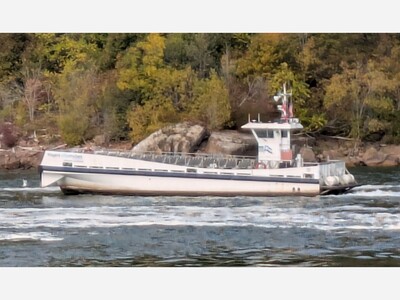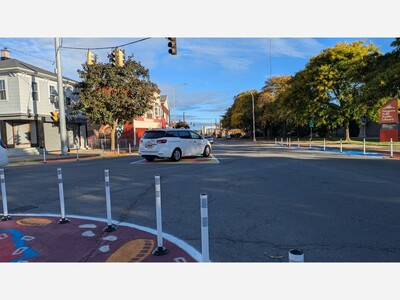Conservancy works to protect wildlands
The Western New York Land Conservancy is thrilled to announce that it will be fundraising to permanently protect six properties this year totaling 732 acres.
All six properties are located within Core Areas of the WNY Wildway, the Land Conservancy’s landscape-scale conservation initiative that seeks to protect and connect some of the largest remaining forests in our region. Five properties (539 acres) are critical wetlands and their surrounding forests in the Black Creek watershed in Allegany County. The sixth property (193 acres) is land that is adjacent to our existing Janet Gallogly Allegany Wildlands in Cattaraugus County. Permanently protecting this property will more than double the size of that preserve to 377.5 acres.
More about this year’s projects:
Black Creek Protection Projects
In 2022, the New York State Department of Environmental Conservation awarded the Land Conservancy a grant to pursue source water protection acquisitions in Allegany County as part of its Water Quality Improvement Project (WQIP). Since then, the Land Conservancy has identified priority parcels and worked with willing landowners to protect their land. These five properties are known collectively as the “Black Creek Protection Projects.”
The Land Conservancy needs to raise an additional $1.1 million for the restoration, public access, and stewardship funds that will take care of these properties forever. They have already raised $150,000 toward the Black Creek Protection Projects and have a number of grants pending.
The crown jewel of the Black Creek Protection Projects is the 276-acre Black Creek Preserve in the town of Birdsall, NY. Created through the purchase of two privately owned parcels, this stunning property contains forests, wetlands, and multiple headwater streams. Located just southwest of the Keeney Swamp State Forest (2,408 acres), the Black Creek Preserve adds important acreage to the core area of the WNY Wildway.
The Worden Wetlands is 180 acres in the heart of the Black Creek wetlands, which will be purchased by the Land Conservancy. It has both woodlands and wetlands, each with its own unique ecosystem. The woodland is a young forest that provides habitat for animals like bobcats, deer, bears, and owls. In the wetland, turtles roam the shore, otters and beavers swim through the water, and birds like Swamp Sparrows and Marsh Wrens call out from the grasses where they nest.
The Shaw Conservation Easement* is 30 acres of vital floodplain where Black Creek winds through the land, naturally filtering rainwater and helping protect our region’s drinking water. It connects to both Keeney Swamp State Forest and our Worden Wetlands, expanding a key WNY Wildway Core Area rich in wildlife. Along the creek, you’ll find giant tussock sedges, towering serviceberry trees, and rare stands of Balsam fir.
The Patrick Conservation Easement is a mature, 53-acre forest bordering Jersey Hill State Forest and will add over 1,000 acres of protected land. A beaver dam along a Black Creek tributary creates a rich wetland filled with meadowsweet, tussock sedge, and a 10-acre stand of Eastern Hemlock. With streams, seeps, and underground water flow, this forest plays an essential role in protecting the headwaters of Black Creek and the Genesee River.
*A conservation easement is a legal agreement that a landowner makes with the Land Conservancy to protect their land forever. It limits development or mining, so the land stays natural or scenic. The land still belongs to the owner, but the protections stay in place even if the land is sold or passed on.
Allegany Wildlands Expansion
In 2022 the Land Conservancy purchased the Janet Gallogly Allegany Wildlands in South Valley, Cattaraugus County, a stunning, publicly-accessible nature preserve with hiking trails overlooking the Allegany Reservoir. This year, the Land Conservancy plans to purchase and protect the adjacent 193-acre property, more than doubling the Allegany Wildlands’ size and footprint to 377.5 acres.
Nestled between Allegany State Park and South Valley State Forest, the Janet Gallogly Allegany Wildlands is part of one of the most significant cores in the Western New York Wildway. During the last ice age, the glaciers never reached this location. Meltwater from the glaciers immediately north of the region cut deep valleys among the surrounding hillsides, creating the panoramic landscape we see today. Today it hosts a rare S2-ranked Allegheny oak forest, one of fewer than ten documented occurrences statewide. Conservation will safeguard this critical ecological wonder for generations to come.
This property supports a range of plant species, including native orchids, and provides habitat for Northern long-eared bats, Bald Eagles, and native trout. Its ecological diversity and intact forest also contribute to regional climate resilience, serving as a carbon sink and habitat for climate-adaptable species. Black bear, bobcat, and fisher roam the ridges and ravines, while colorful songbirds nest in the tall trees.
The Allegany Wildlands Expansion has a total project cost of $631,000. Thanks to two generous donors, the Land Conservancy has already raised $282,000 toward this project. Once it is protected, the Land Conservancy will extend the publicly-accessible trail system already in place at the Allegany Wildlands into this section of the forest.
The Land Conservancy encourages donations to these projects via wnylc.org/donate (select “Land Acquisition Fund” in the dropdown menu) or via check made payable to “Western New York Land Conservancy” to P.O. Box 471, East Aurora, NY 14052. Please call or email if you have questions: (716) 687-1225 or info@wnylc.org.
The Western New York Land Conservancy is a regional, non-profit land trust that has protected more than 8,000 acres of land with significant conservation value in our region. We envision a future in which forests, farms, meadows, and waterways are connected, cherished, and protected in Western New York. We are accredited by the Land Trust Accreditation Commission. To learn more about our mission and vision, and to read our land acknowledgement, visit wnylc.org.





